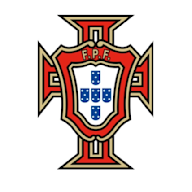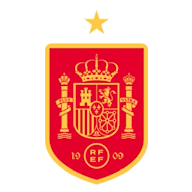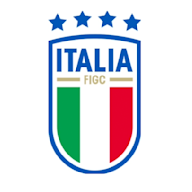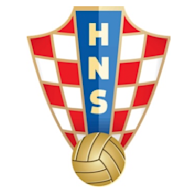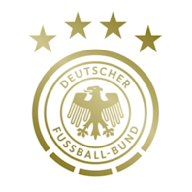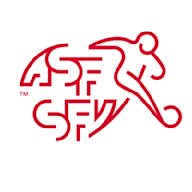Suchergebnisse
Suchergebnisse:
Der Euro ( griechisch ευρώ, kyrillisch евро; ISO-Code: EUR, Symbol : €) ist laut Art. 3 Abs. 4 EUV die Währung der Europäischen Wirtschafts- und Währungsunion, eines in Art. 127–144 AEUV geregelten Politikbereichs der Europäischen Union (EU). Er wird von der Europäischen Zentralbank emittiert und fungiert als ...
- Eurozone
Die Mitglieder der Eurozone (Stand 1. Januar 2023) Staaten...
- Eurozeichen
Das Euro-Währungssymbol wird im Unicodesystem durch den...
- Kroatien
Kroatien (kroatisch Hrvatska ⓘ /? [xř̩ʋaːtskaː], amtlich...
- Euromünzen
Die Euromünzen sind die in derzeit 20 Ländern der...
- Starterkit
Deutsches Starterkit Österreichisches Startpaket...
- Kroatische Kuna
Kursentwicklung zum Euro bis zum Jahreswechsel 2022/2023,...
- Deutsch
Die deutsche Sprache bzw.Deutsch [dɔɪ̯tʃ] ist eine...
- Eurozone
The euro (symbol: €; currency code: EUR) is the official currency of 20 of the 27 member states of the European Union. This group of states is officially known as the euro area or, more commonly, the eurozone. The euro is divided into 100 euro cents.
- EUR (numeric: .mw-parser-output .monospaced{font-family:monospace,monospace}978)
- Varies, see language and the euro
Erfahren Sie, wie die EU-Länder seit Ende der 1960er Jahre eine Wirtschafts- und Währungsunion verfolgten und den Euro als gemeinsame Währung einführten. Lesen Sie über die Vorteile, die Hindernisse und die Etappen des Euro-Projekts.
- Development
- Creation
- Recession Era
- Overview of Eurozone Enlargements and Exchange-Rate Regimes For EU Members
- See Also
- Further Reading
- References
- External Links
Early ideas
The first ideas of an economic and monetary union in Europe were raised well before establishing the European Communities. For example, as earlier on as the League of Nations, Gustav Stresemann had enquired in 1929 for a European currency against the background of an increased economic division due to a number of new nation states in Europe after World War I. At this time memories of the Latin Monetary Union involving principally France, Italy, Belgium and Switzerland and which, for practical...
Relaunch
The Hannover European Council asked Commission President Jacques Delors to chair an ad hoc committee of central bank governors to propose a new timetable with clear, practical and realistic steps for creating an economic and monetary union. This way of working was derived from the Spaak method. France and the UK were opposed to German reunification, and attempted to influence the Soviet Union to stop it.However, in late 1989 France extracted German commitment to the Monetary Union in return f...
Second stage
Delors' second stage began in 1994 with creation of the European Monetary Institute, succeeding the EMCF, under Maastricht. It was created as the forerunner to the European Central Bank. It met for the first time on 12 January under its first president, Alexandre Lamfalussy. After much disagreement, in December 1995 the name euro was adopted for the new currency (replacing the name Ecu used for the previous accounting currency), on the suggestion of then-German finance minister Theo Waigel. T...
Launch
The currency was introduced in non-physical form (traveller's cheques, electronic transfers, banking, etc.) at midnight on 1 January 1999, when the national currencies of participating countries (the eurozone) ceased to exist independently in that their exchange rates were locked at fixed rates against each other, effectively making them mere non-decimal subdivisions of the euro. The euro thus became the successor to the European Currency Unit (ECU). The notes and coins for the old currencies...
Minting
The designs for the new coins and notes were announced between 1996 and 1998, and production began at the various mints and printers on 11 May 1998. The task was large, and would require the full three-and-a-half-years. In all, 7.4 billion notes and 38.2 billion coins would be available for issuance to consumers and businesses on 1 January 2002. In seven nations, the new coins—struck in the run-up to 1 January 2002—would bear a 2002 date. In Belgium, Finland, France, the Netherlands, and Spai...
Currency transition
The new coins and notes were first valid on the French island of Réunion in the Indian Ocean. The first official purchase using euro coins and notes took place there, for one kilogram of lychees.The coming of midnight in Frankfurt at the ECB offices, though, symbolised the transition. In Finland, the Central Bank opened for an hour at midnight to allow citizens to exchange currency, while a huge euro pyramid decorated Syntagma Square in Athens. Other countries noted the coming of the euro as...
As a result of the global financial crisis that began in 2007/2008, the eurozone entered its first official recession in the third quarter of 2008, official figures confirmed in January 2009. The EU was in negative growth for the second, third and fourth quarters of 2008 and the first quarter of 2009 before returning to positive growth (for the eur...
The chart below provides a full summary of all applying exchange-rate regimes for EU members, since the European Monetary System with its Exchange Rate Mechanism and the related new common currency ECU was born on 13 March 1979. The euro replaced the ECU 1:1 at the exchange rate markets, on 1 January 1999. During 1979–1999, the D-Markfunctioned as ...
James, Harold (2012). Making the European monetary union: the role of the Committee of Central Bank Governors and the origins of the European Central Bank. Cambridge, MA: Harvard University Press....Pomfret, Richard (2021). The Road to Monetary Union. Cambridge University Press.Einaudi, Luca (2001). European Monetary Unification and the International Gold Standard (1865–1873) (PDF). Oxford University Press. ISBN 978-0-19-924366-2. Archived from the original (PDF) on 8 Aug...
The Euro's Rise from the Dean Peter Krogh Foreign Affairs Digital Archives(archived 15 December 2012)Learn about the history, features and benefits of the euro, the currency of 20 EU Member States and some non-EU countries. Find out which countries use the euro, when they joined the EU and the euro area, and see the fixed conversion rates of the national currencies.
Learn about the euro, the common currency of 20 EU countries, and its benefits, design, management and international use. Explore the history and purpose of the euro, and how to exchange national currency into euro.
Der Euro ist die offizielle Währung von 20 Ländern der Europäischen Union, die zusammen das Euro-Währungsgebiet oder die Eurozone bilden. Einige EU-Länder müssen die für den Beitritt zum Euro-Währungsgebiet erforderlichen Kriterien noch erfüllen; Dänemark hat sich gegen einen Beitritt ausgesprochen. Im Euro-Währungsgebiet ist der ...

